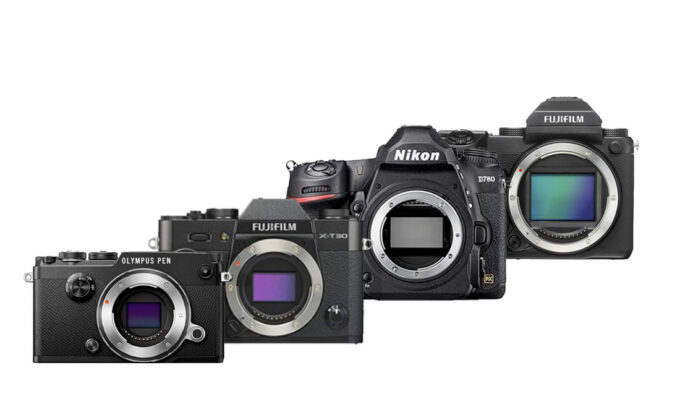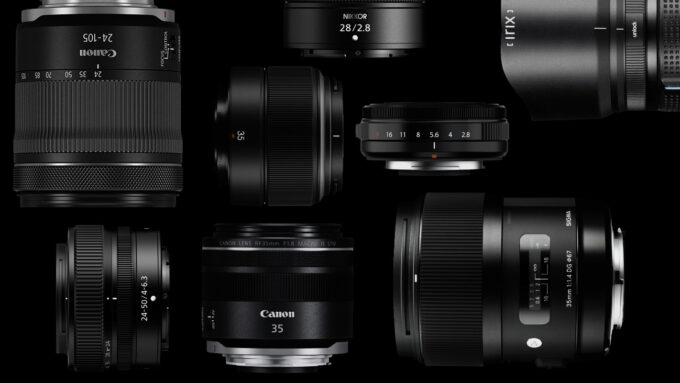Choosing the right lens is paramount in the field of product photography. The lens you pick significantly impacts the clarity, depth, and perspective of your product images, playing a key role in highlighting the product’s best features. A well-selected lens not only captures the fine details and textures of the product but also influences how potential customers perceive it. The impact of lens choice extends beyond mere aesthetics; it also affects the consumer’s decision-making process by presenting the product in the best possible light.
Know Your Camera’s Sensor Size

Source: natureslight.co.za
The sensor size of your camera is a critical factor that affects your choice of lens and, consequently, the quality of your product images. Cameras with full-frame sensors have larger sensors, offering a broader field of view and capturing more of the scene. This is particularly beneficial for product photography as it allows for capturing products in their entirety with rich detail. Crop sensor cameras, however, have a smaller sensor which results in a cropped, tighter image. This affects the lens’s effective focal length, bringing subjects closer and potentially altering the desired composition.
Prime vs. Zoom Lenses
Prime lenses, with their fixed focal length, are renowned for their sharpness and fast apertures. They excel in providing consistent quality and are ideal for capturing products in a controlled environment, where lighting and distance from the subject remain unchanged.
However, their lack of flexibility might be limiting in dynamic shooting scenarios. Zoom lenses, on the other hand, offer versatility with their variable focal lengths, making them suitable for a range of product sizes and shooting conditions. While they offer convenience and flexibility, they might not always match the sharpness and aperture capabilities of prime lenses. This is a difference that every professional photo studio Dubai can recognize and explain to its clients.
Focal Length Explained

Source: slrlounge.com
Focal length is a key concept in photography, determining the lens’s angle of view and how much the subject will be magnified. Lenses with short focal lengths offer a wide field of view, making them ideal for capturing larger products or for shooting in tight spaces. Conversely, lenses with longer focal lengths provide a narrower field of view, perfect for focusing on specific details or for creating a flattering, compressed perspective in your product shots. Understanding the implications of focal length on your composition and perspective is crucial. It allows you to creatively manipulate space in your images, adding depth and dimension to your product photography, ultimately making your products more appealing and eye-catching to potential buyers.
Macro Lenses for Close-ups
Macro lenses are a game-changer when it comes to capturing the minute details of small products. They are specifically designed to achieve high magnification, revealing details and textures that are usually not visible to the naked eye. This feature is especially beneficial for products where detail and texture are selling points, such as jewelry or intricately designed electronics. However, using macro lenses effectively requires a steady hand or a tripod to avoid blurring and a good understanding of lighting to bring out the best in the product’s details.
Aperture and Depth of Field
The aperture setting of a lens plays a crucial role in determining the depth of field in your photographs, which in turn affects the focus and overall look of your product images. A wide aperture (a low f-number) creates a shallow depth of field, sharply focusing on the product while blurring the background. This effect draws the viewer’s attention directly to the product, making it stand out. Conversely, a narrow aperture (a high f-number) keeps more of the scene in focus, which can be useful for showing products in context or when you want to showcase the product alongside other items.
Lens Speed and Low-Light Shooting

Source: contrastly.com
The speed of a lens, often determined by its maximum aperture, is crucial in low-light conditions. Fast lenses with wide apertures allow more light to reach the camera sensor, enabling you to shoot in dimly lit environments without sacrificing the image’s sharpness or increasing the ISO too much, which can introduce noise. This feature is particularly beneficial in product photography, where the subtleties of light and shadow play a significant role in highlighting the product’s features. Investing in a fast lens ensures that your product photos are sharp, well-exposed, and free from the graininess that high ISO settings can cause, even in challenging lighting situations.
Lens Distortion and Correction
Lens distortion can significantly affect the appearance of your products in photographs. Wide-angle lenses, for instance, might introduce barrel distortion, causing straight lines to appear curved, while telephoto lenses can lead to pincushion distortion, where lines bend inward. Such distortions can misrepresent your product, making it appear different from its actual shape and size. Correcting these distortions is crucial for maintaining the integrity of your product images. Utilizing lens correction features in post-processing software can help adjust and compensate for these distortions, ensuring that your product photos are a true and accurate representation of the actual items.
Image Stabilization for Sharpness
Sharp, clear product images are essential for showcasing the quality of your products. Image stabilization plays a vital role in achieving this clarity, especially in handheld shooting or in low-light conditions where slower shutter speeds are necessary. Lenses equipped with image stabilization systems allow you to shoot at slower shutter speeds without the risk of blur caused by camera shake. This feature is particularly beneficial when shooting detailed product shots where even the slightest movement can lead to a less than sharp image.
Considerations for Different Product Types
Different products require different approaches in product photography, and understanding which lens to use for each type is crucial. For instance, capturing the intricate details of jewelry might require a macro lens, while photographing larger products like furniture might call for a lens with a shorter focal length to capture the entire item. Similarly, products with reflective surfaces might benefit from a lens that can handle such challenges without producing glare or reflections. Tailoring your lens choice to the specific requirements of each product type ensures that you highlight the best features of every product, making them more appealing to potential customers.
Budget-Friendly Lens Options

Source: lensrentals.com
Professional-grade lenses can be a significant investment, but there are also budget-friendly options available that do not compromise on quality. Many brands offer lenses that provide excellent image quality at a fraction of the cost of high-end models. Additionally, considering used or refurbished lenses can be a cost-effective way to access higher-quality lenses. When shopping on a budget, it’s important to research and understand the strengths and limitations of each lens, ensuring that it meets your specific needs in product photography without breaking the bank.
Conclusion and Recap
Choosing the right lens is a pivotal decision in product photography. It affects everything from the image’s clarity and depth to the way potential customers perceive the product. Throughout this article, we’ve explored the importance of understanding your camera’s sensor size, the pros and cons of prime vs. zoom lenses, the significance of focal length, and the unique benefits of macro lenses. We’ve also delved into the technical aspects of aperture, lens speed, distortion, and image stabilization, and provided tailored considerations for different product types and budget-friendly options.







